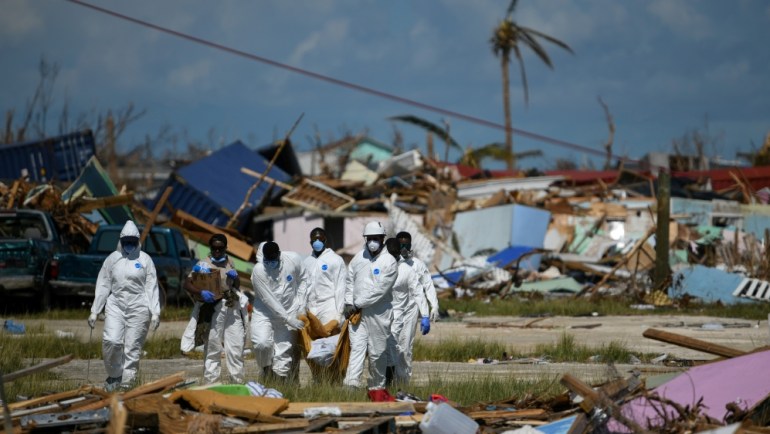Zeta likely a hurricane before hitting Yucatan, heading for US
Forecasters expected the hurricane to move over the Yucatan Peninsula on Monday before heading into the Gulf of Mexico.

A strengthening Tropical Storm Zeta is expected to become a hurricane on Monday as it heads towards the eastern end of Mexico’s resort-dotted Yucatan Peninsula and then likely moves on for possible landfall on the central US Gulf Coast by midweek.
Zeta on Sunday became the earliest ever 27th-named storm of the Atlantic season. The system was centred about 285 kilometres (175 miles) southeast of Cozumel island on Monday morning, the US National Hurricane Center said. It had maximum sustained winds of 110kph (70mph).
Keep reading
list of 4 itemsAsia bears biggest climate-change brunt amid extreme weather: WMO
Deadly Sahel heatwave caused by ‘human-induced’ climate change: Study
Photos: Dubai reels from flood chaos as record rains lash UAE
The storm was moving northwest at around 15kph (9mph) after being nearly stationary over the weekend. Forecasters said Zeta was expected to move over the Yucatan Peninsula later on Monday before heading into the Gulf of Mexico and then approaching the US Gulf Coast by Wednesday, though it could weaken by then.

Officials in Quintana Roo state and those at Cancun and other resorts said they were watching the storm. They reported nearly 60,000 tourists in the state as of midweek. The state government said 71 shelters were being readied for tourists or residents who might need them.
The government is still handing out aid, including sheet roofing, to Yucatan residents hit by Hurricane Delta and Tropical Storm Gamma earlier this month.
A hurricane warning was expanded for the Yucatan Peninsula from Tulum to Dzilam, including Cancun and Cozumel.
Zeta had been dawdling Sunday because it was trapped between two strong high-pressure systems to the east and west, and it could not move north or south because nothing was moving there either, said Brian McNoldy, a hurricane researcher at the University of Miami.
Colorado State University hurricane researcher Phil Klotzbach said that when a storm gets stuck, it can unload dangerous downpours over one place, causing flooding. That happened in 2017 over Houston with Harvey, when more than 150 centimetres (60 inches) of rain fell and in 2019 over the Bahamas with Category 5 Hurricane Dorian, which was the worst-case scenario of a stationary storm, he said.
The hurricane centre said Zeta could bring 10 to 20cm (4 to 8 inches) of rain to Mexico, the Cayman Islands and parts of Cuba, before drenching the central US Gulf Coast.
The storm could make landfall anywhere from Louisiana to the Florida Panhandle, forecasters said.

Louisiana Governor John Bel Edwards urged his state’s citizens to monitor the storm, and the state activated its crisis action team.
Zeta broke the record for the previous earliest 27th Atlantic named storm that formed on November 29, 2005, Klotzbach said.
This year’s season has so many storms that the hurricane centre has turned to the Greek alphabet after running out of official names.
Zeta is the furthest into the Greek alphabet the Atlantic season has gone. There was also a Tropical Storm Zeta in 2005, but that year had 28 storms because meteorologists later went back and found they missed one, which then became an “unnamed named storm,” Klotzbach said.